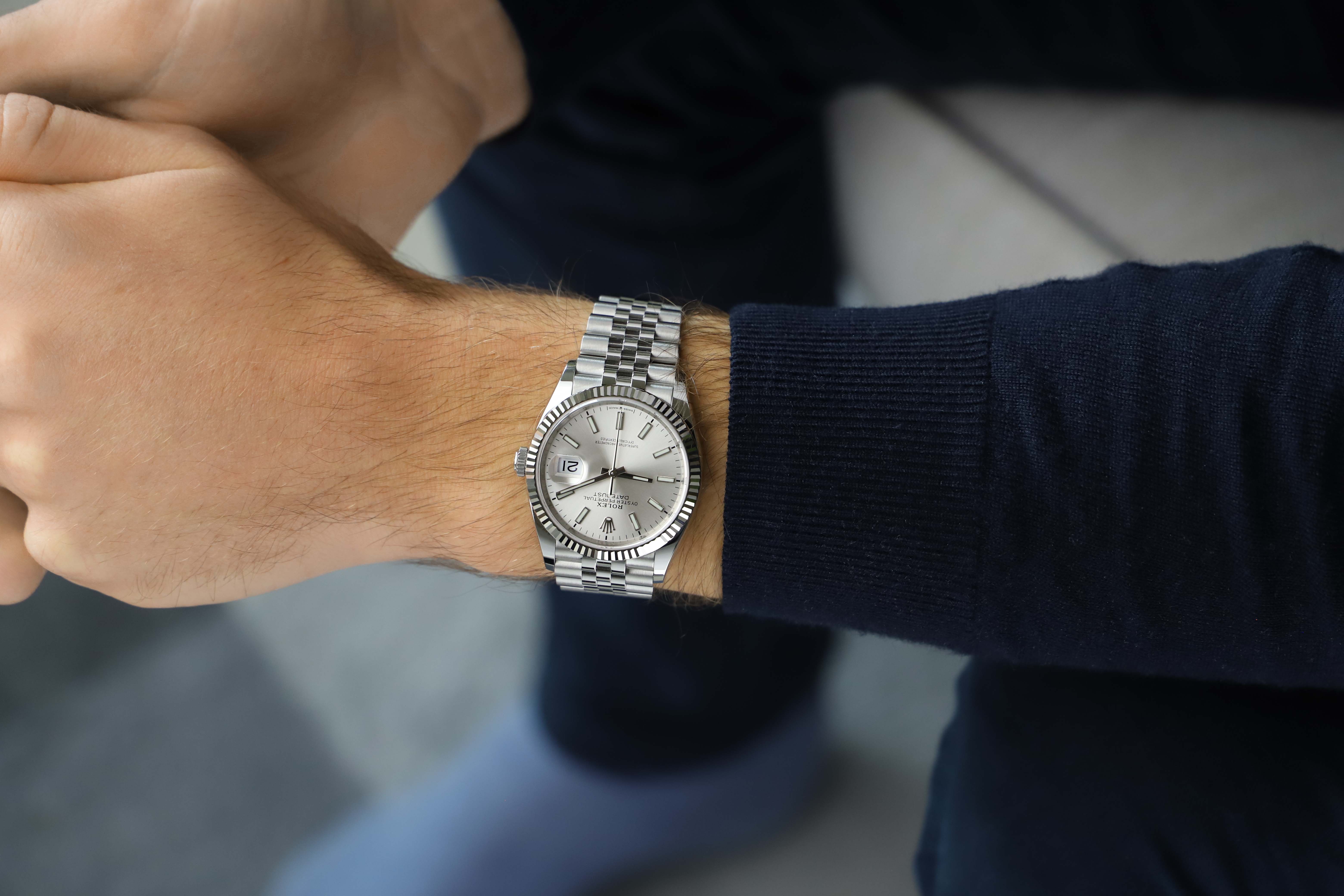
Is it bad for a Rolex to Stop? Let your Rolex Stop
Almost all of Rolex’s models are automatic. And today, Rolex only makes automatic watches. Automatic is another word for self-winding and means that they have mechanical movements which are powered by the wrist of the movement via a rotor. As your wrist moves in your everyday life, the rotor inside the watch will rotate and wind the movement. This ensures that as long as you wear your watch on a regular basis, it will never stop.
All automatic watches – including Rolex’s also have “power reserves”. This is the time a watch can be left unworn until the movement runs out of energy and ultimately stops. The power reserve of Rolex watches normally ranges from 48 hours to 70 hours when fully wound. As an example, if your watch has a 48-hour power reserve and you take off the watch on Friday and then pick up the watch on Monday, it will have run out of energy and stopped.
But a common question that we receive is if it is bad for a Rolex to stop. Does it cause damage or excessive wear to the movement to let your Rolex stop?
These are questions that we will uncover in this article.

Is it bad for a Rolex to Stop?
The short answer is no. It is not bad for the movement of your Rolex to stop. Nor does it not cause increased wear and tear to the movement if it stops as a result of the power reserve being out of energy.
You can think of your Rolex’s movement as a car. You wouldn’t imagine that it is bad to turn off the engine of a car, would you? Just like a watch movement, a car’s engine consists of countless mechanical parts that all work in perfect harmony to create a functioning machine.
When a Rolex watch has stopped, Rolex advises that you manually wind it before you start wearing it again. Rolex’s automatic watches, whilst they have a rotor, can also be manually wound by winding it clockwise after you have unscrewed the crown and have it in the first position. This way, you will get the watch to start again. Rolex writes:
“To get it going, simply wind the movement manually by unscrewing the crown to the winding position and turning it clockwise about 20 times. Please remember to screw the crown back down properly against the case in order to guarantee waterproofness.”
If we are going to be really picky, having the watch stop for a few days or even just a few weeks can actually be positive for your Rolex movement. Of course, Rolex watches are meant to be used – and that’s what they are designed for, but naturally, as with all mechanical machines, using them will also mean increased wear and tear to the movement. Again, a parallel can be made to a car’s engine. A car is meant to be driven, but at the same time, you know that using it will also cause more wear to the engine.
Having said that, we don’t advise you to let your watch stop and “rest” just because you want to protect the movement. They are built to be used and will last for a really long time. And if regularly serviced and maintained according to the recommended service intervals, they will be able to last for generations. Letting your watch run without “resting” is not something you should worry about. And having the movement stop is not something you should worry about either.
Don’t feel like you desperately have to run to your watch and wind it if you have forgotten to wear it over the weekend to prevent it from stopping.

Don’t leave your Rolex stopped for too long
Whilst it is in no way bad if a Rolex watch stops after you have not worn it for a few days, it is not advised to leave the watch stagnant and unused for a long time. And by a long time, we’re talking months, but mainly years.
Having the watch stop and then leaving it for many years is not ideal for the lubricants inside the movement. The lubricants and parts inside the movement are designed to move and when the movement is completely stopped for a long time, the longevity and proper accuracy of the watch may be affected. Over time, the lubricants will run dry and not be distributed in the places they should be. And this will ultimately cause increased friction once you get the watch going again and ultimately, it may require you to service the watch earlier than what would otherwise have been necessary.
However, with that said, having the watch stop for a longer period of time will primarily affect the lubricants of the movement. It will not cause any damage to the movement.




